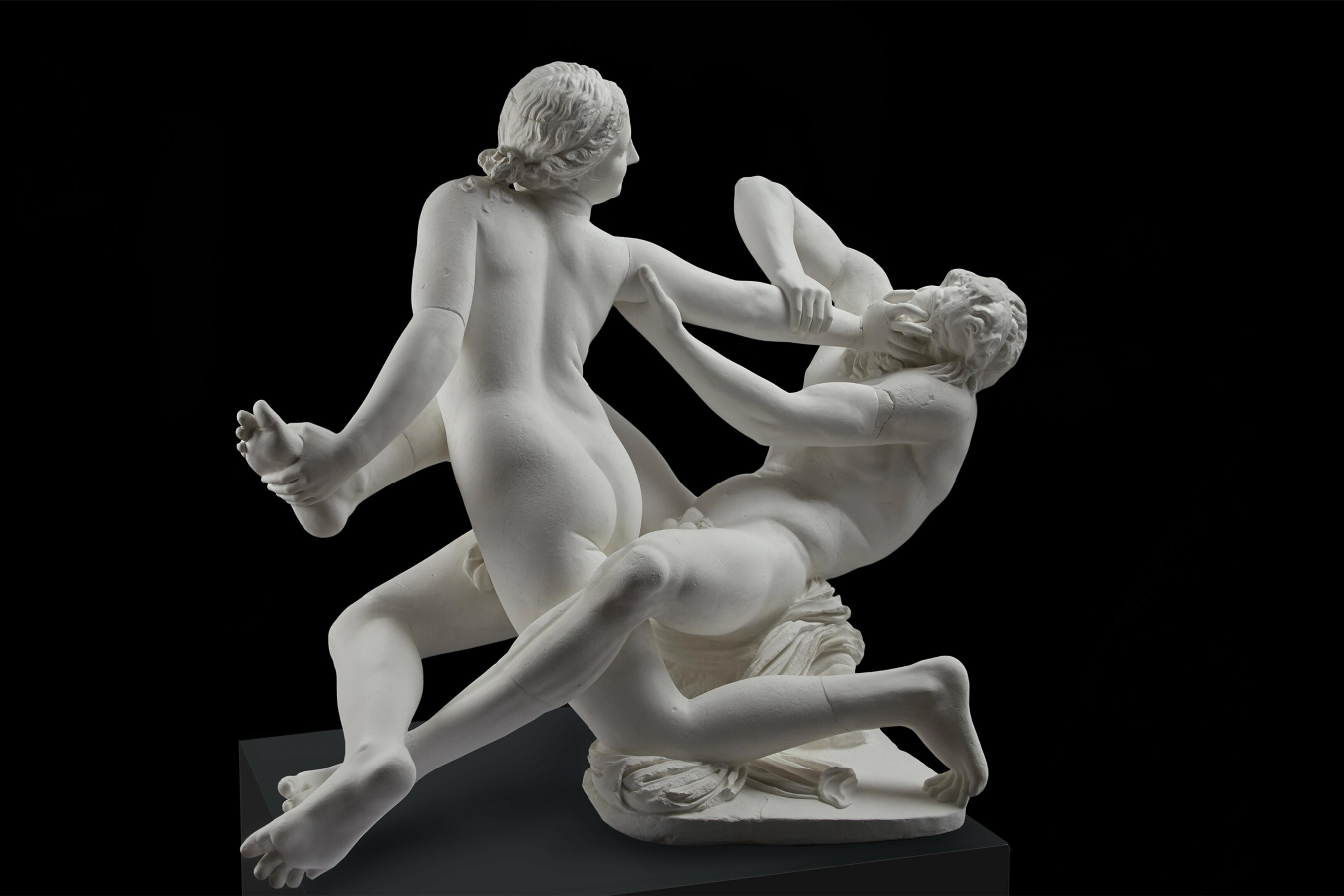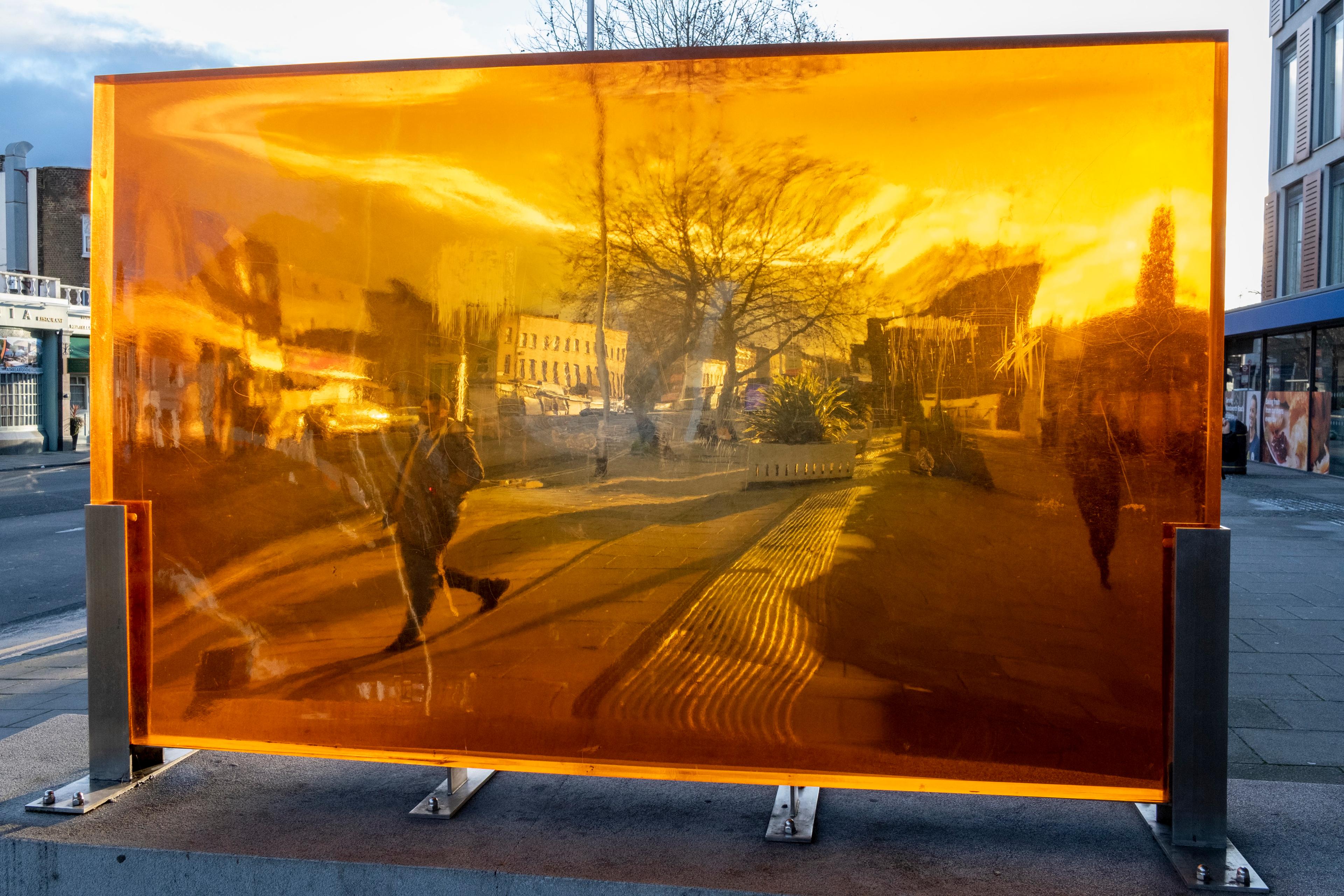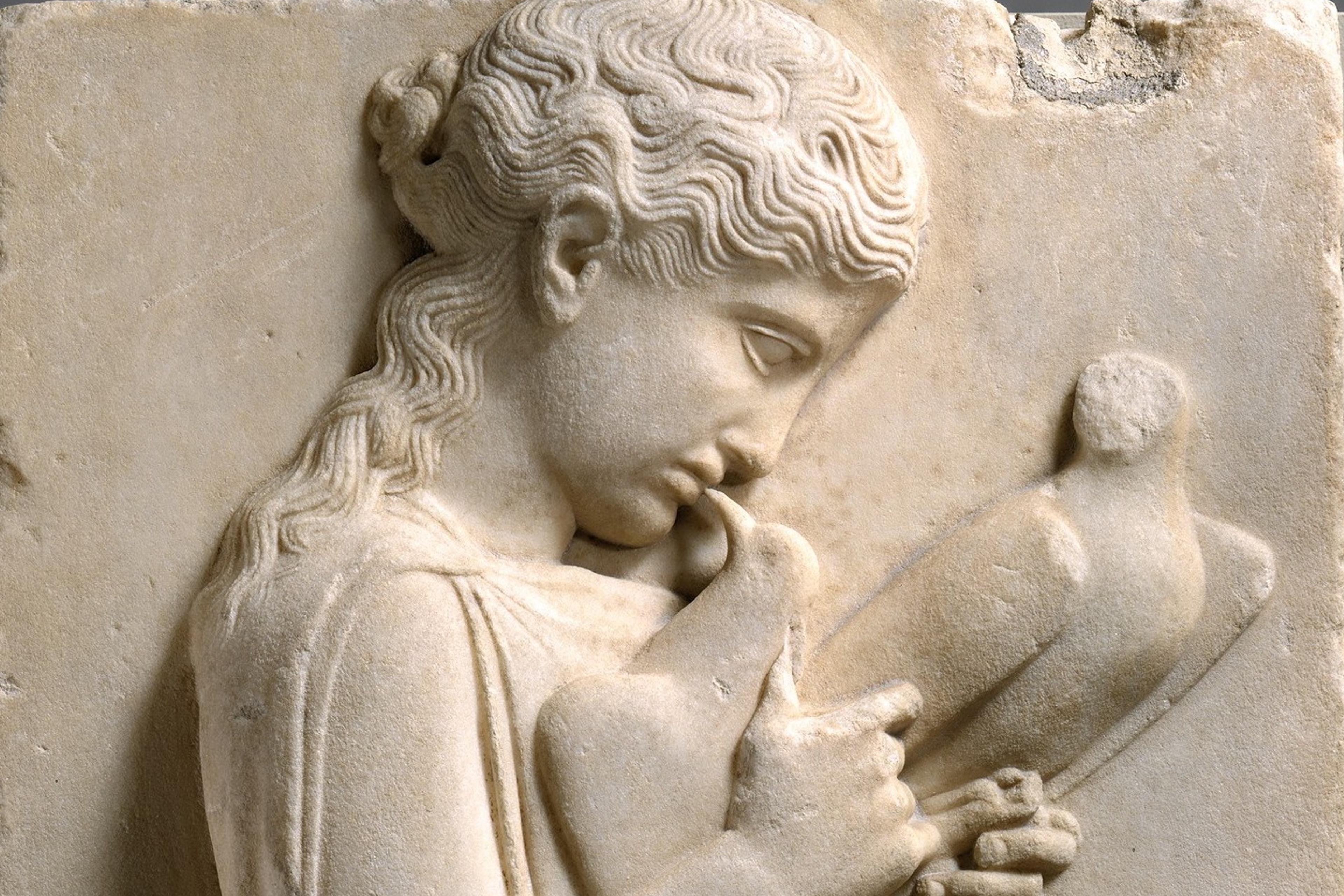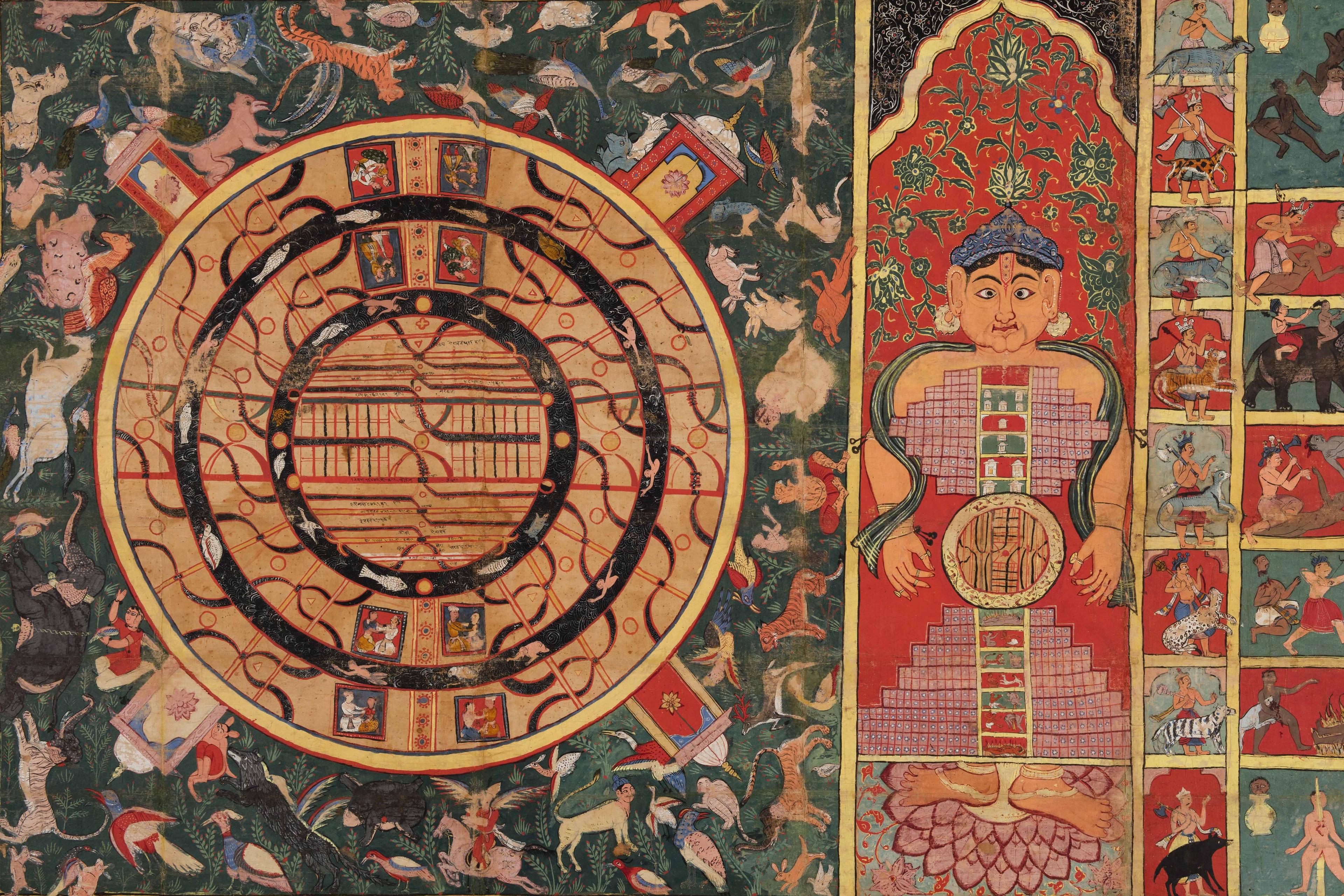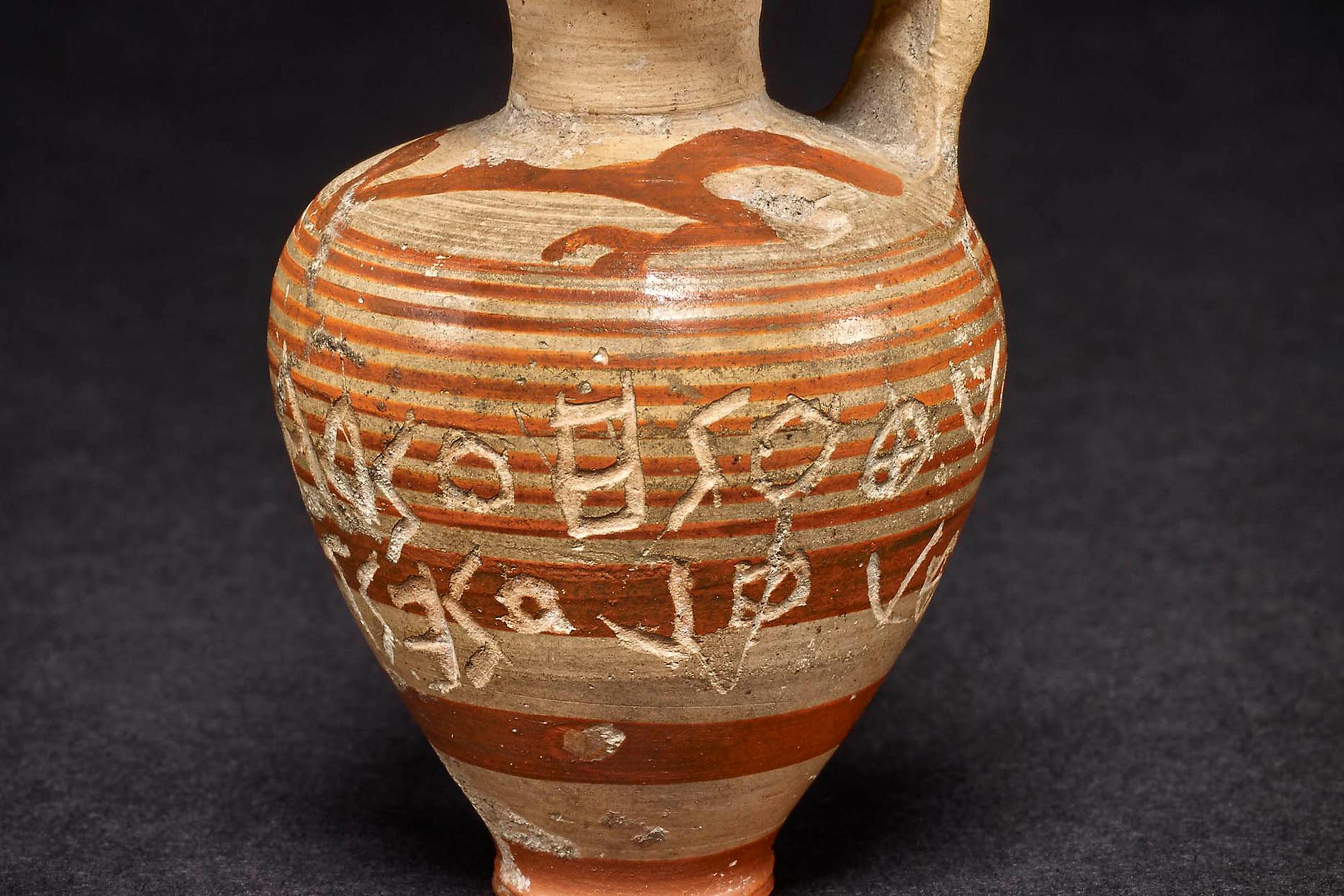In 392 CE, the Roman emperor Theodosius I outlawed one of the oldest and most well-established mystery cults in the Greek-speaking world, the Eleusinian Mysteries, which had taken place for more than 1,000 years in a sanctuary on the outskirts of Athens. A devout Christian, Theodosius I’s decree was part of an effort to stamp out pagan beliefs and cultic mysticism. His empire would not be one with divination practices, blood sacrifices and secret mystic rites to Greek gods. And so, the Eleusinian cult dedicated to Demeter and Persephone, which had drawn countless people from across the ancient Greek-speaking world since 1500 BCE, ended abruptly. The rites are now long forgotten. But the Eleusinian Mysteries have endured in other ways.
Though we do not know exactly what took place at Eleusis, we do know a little about how the experience felt for initiates. This is how Plutarch, philosopher and priest of Apollo, described the experience of mystery initiation sometime during the 1st or 2nd century:
First there was wandering and tiresome running about alongside apprehensive and endless journeys through darkness. Then, before the final stage, there were all sorts of terrors: shivering, trembling, sweating, and terrible awe. After that a wondrous light confronted them, and purified landscapes and meadows received them, with voices and songs and rites of sacred harmonies and holy visions. In the midst of these the wholly fulfilled and initiated person has become liberated and free to roam about, celebrating the mysteries with a crown atop their head and communing with blessed and pure people. They look back at the impure and uninitiated multitude back on earth, who stampede and squabble with one another in dense mire and mist, clinging onto their sufferings because of their fear of death and lack of faith in the good things the next world holds.1
Participating in the rites was clearly transformative, which is perhaps why the Mysteries at Eleusis became so influential. Notable initiates include Aeschylus, Sophocles and Cicero, and the Roman emperors Hadrian, Augustus and Marcus Aurelius. Philosophers were drawn to the experience, too. But for one Greek thinker in particular, the Eleusinian Mysteries were important for more than just spiritual transformation.
Plato seems to have understood the ritual experiences at Eleusis as a kind of blueprint for acquiring higher knowledge, and he used this blueprint in his Allegory of the Cave to show how people use education and reasoning, not their senses, to find philosophical truth. This may be surprising. Plato is known as a rational thinker and, on the surface, his allegory has nothing to do with the ritual practices of a mystery cult. However, reading more carefully, his story of philosophical truth begins to echo the initiate’s transformative experience. And Eleusinian ideas and experiences appear elsewhere in his work. The question is why a keen proponent of logos (reason) was so interested in the secret rites at Eleusis. Why did Plato turn to mysticism to explain his ideas about knowledge?
In the ancient Greek-speaking world, mystery cults for gods and heroes abounded. Though they were widespread, we know little about them today. Many enforced a policy of total secrecy, and each was geographically localised, with no standardised practices or doctrines linking them. The term ‘mystery cult’ only confuses things further. We call them ‘mystery’ cults not because they remain obscure to us but because that is how the Greeks referred to them: ‘musteria’ meaning ‘secret rites’. The modern word ‘mystery’ has lost this ritual meaning. The modern word ‘cult’ is also misleading. The Eleusinian Mysteries were not fringe spiritual practices. The ‘cult’ permeated religious life, remaining open to (almost) all people in the Greek-speaking world, including men, women, children, foreigners, even slaves – anyone could participate if they spoke Greek and had not committed murder or other serious crimes.
The rites were profoundly influential and transformative. They not only gave initiates a way to face death, but also seemed to play a ‘civilising’ role in society. As Cicero wrote in De Legibus (‘On the Laws’):
Through them we have been tamed from a savage and base way of life and civilised towards a state of humanity. Just as they are called initiations, so in truth we have learned [from them] the fundamentals of life and received the groundwork not only for living with happiness but also for dying with better hope.2
This is how Cicero explained the influence of the Mysteries around 58 BCE. He implies that some radical reformulation of worldview is acquired through Eleusinian initiation. But what sort of ritual transforms a person’s viewpoint, their fate in the afterlife, and their society? What exactly happened at Eleusis?
A transition from darkness to light, from blindness to seeing, seems to have been central to the ceremony
The mysteries were broken into two stages. The first stage of initiation, the ‘Lesser Mysteries’, took place annually in February or March. Then an initiate was ready for the ‘Greater Mysteries’ at Eleusis, the final stage of initiation in September or October the following year, during the Athenian festival of Demeter and Persephone. Before the final stage, initiates purified themselves by fasting and bathing, observing a period of celibacy, and carrying a sacrificial piglet from Athens to the sea. A ritual procession of hundreds of initiates then made a journey of some 23 kilometres along the Sacred Way from Athens to the sanctuary at Eleusis where the final revelation – called the epopteia or epoptika (literally, ‘the beholding’), took place in a great hall called the Telesterion.
The rites in the two stages seem to have differed. Writing around the 2nd century CE, Clement of Alexandria, a theologian who converted to Christianity from paganism, explains that the Lesser Mysteries comprised ‘teaching and preparation for things to come’ whereas in the Telesterion ‘there is nothing left to learn, but rather one is to behold and meditate upon nature and realities’.
The climax of the Mysteries likely entailed beholding a deity and ritually enacting her presence, culminating with the epiphanic appearance of Demeter herself. To do this, the rites may have involved re-enacting a sacred drama depicting Persephone’s abduction and Demeter’s epiphany (the myth on which the original ritual was based). A transition from darkness to light, from blindness to seeing, seems to have been central to the ceremony. Some researchers have suggested that sacred images were shown among a plethora of torches and dancing lights. Others suggest that ritualised psychedelics were used to intensify the experience. Whatever the case, the experience was life-changing: a spiritual awakening.
Awakenings also appear in the dialogues of Plato. In his Socratic dialogue the Symposium (written around 385-370 BCE), the final stage of the philosopher’s ascent – philosophical truth – is analogous to the intense revelation at the climax of a mystery ritual. In the Symposium, Plato directly references the Eleusinian Mysteries through a dialogue between Socrates and a seer named Diotima. While explaining her philosophy of love, Diotima uses the words ‘telea’ (referring to the Eleusinian rites) and ‘epoptika’ (the ultimate revelation or ‘beholding’ at the final stage of initiation) when she questions whether Socrates could become initiated into the highest mysteries of love and sex:
Perhaps even you, Socrates, could become an initiate in these mysteries of love. But when it comes to the ultimate rites [telea] and highest stage of initiation [epoptika] – these being the end goal if someone progresses correctly – I do not know whether you would be able to do this.3
By grounding philosophical enlightenment in cultic initiation, Plato suggests that aspiring philosophers must have a transformative experience akin to the religious climax of the Eleusinian Mysteries if they seek the highest philosophical truth(s). In both cases, this experience manifests without instruction or teaching. It is sudden and epiphanic.
True knowledge lies only with the Forms, which exist in a realm separate from the material universe
To understand why Plato presents the philosophical process this way, we must understand his Theory of Forms. His theory asserts that, for each identifiable characteristic in the world – including mathematical properties like largeness and length, or abstract qualities like beauty, justice and courage – there exists a corresponding universal principle, a form (which he called an ‘eidos’). For example, the Form of largeness causes all things we perceive as large to appear large. This principle defines their largeness. Our senses alone do not explain this largeness: a wolf appears large when compared with a rat but small when compared with an elephant. The wolf can never be purely large or small. Instead, it is always in a state of becoming. True largeness, like any other Form, is distinct from the material world of becoming. It is an object of stable knowledge whose nature never changes.
For Plato, the sensory world is epistemologically fallible. True knowledge lies only with the Forms, which exist in a realm separate from the material universe and are accessible only through a person’s intellect, not their senses. This might explain why Plato often uses the word ‘theios’, meaning ‘divine’, to describe the Forms. Just as the mystery initiate seeks a special relationship with the divine, so does the philosopher seeking the Forms.
Plato’s emphasis on knowing and defining, rather than sensing, may appear to conflict with the importance of direct experience in the Eleusinian Mysteries. However, his Allegory of the Cave from the Republic, Plato’s Socratic dialogue written around 375 BCE, suggests otherwise. In the allegory, Socrates compares human existence to prisoners shackled in a cave, only able to see shadows cast by firelight onto a wall before them. Having never seen anything else, the prisoners consider these shadows reality. If one prisoner were released and looked directly at the fire, they would first experience pain and confused terror. But through the process of suffering and fear they would come closer to reality. Their worldview would begin to change. Through this process, they become a kind of initiate. However, they are yet to experience the final revelation.
What if, Socrates continues, the prisoner was then dragged from the cave into the sunlight? Once again, they would experience pain because they had always lived in darkness. But eventually they would be able to look at the Sun directly and, Plato writes, ‘behold what sort of thing it is’. This is the highest stage of initiation, the epopteia.
Plato saw common ground with the initiate who seeks an experience beyond the sensory realm
As Plato writes in his long epistle, the Seventh Letter, the highest philosophical understanding cannot be conveyed through written explanation nor learned like other subjects. It comes through direct, inner experience: ‘Through unceasing communion with the matter itself and making it your life’s calling, it is born in the soul suddenly, like light kindled from a leaping spark, and from there it sustains itself.’4
In the Allegory of the Cave, we have a transition from blindness to seeing, from pain and bewilderment to beholding a sudden, overwhelming light. A total reconceptualisation of reality confronts the prisoner. Later in the allegory, there is a description of a philosophical initiate returning to the darkness of the cave where they see their former inmates, afraid to face reality. This echoes Plutarch’s description of those uninitiated in the Eleusinian Mysteries who ‘cling onto their sufferings because of their fear of death and ignorance of the afterlife’s benefits’.
We may view Plato as an archetypal rational philosopher, a thinker at odds with the mysticism of Eleusis. Instead, he saw common ground with the initiate who seeks an experience beyond the sensory realm. Participants in the Eleusinian Mysteries sought the divine through mystic ritual; Plato’s philosopher seeks eternal and ‘divine’ Forms by transcending the shadows of sensory perception. For Plato, mystery-cult initiates and rational philosophers can walk the same path.
References
1. Emily Kearns, Ancient Greek Religion: A Sourcebook (Chichester: Wiley-Blackwell, 2010), based on Plutarch, Moralia, Volume XV: Fragments, trans F H Sandbach, Loeb Classical Library 429 (Cambridge, MA: Harvard University Press, 1969), modified translation based on the original Greek.
2. M Tulli Cicero, De Legibus, Liber Secundus, passage 2.36, The Latin Library, accessed 14 August 2024, my translation based on the original Latin.
3. Plato, Lysis. Symposium. Phaedrus, ed and trans Christopher Emlyn-Jones and William Preddy, Loeb Classical Library 166 (Cambridge, MA: Harvard University Press, 2022), my translation based on the original Greek.
4. Plato, Timaeus. Critias. Cleitophon. Menexenus. Epistles, trans R G Bury, Loeb Classical Library 234 (Cambridge, MA: Harvard University Press, 1929), translation modified for clarity based on the original Greek.

